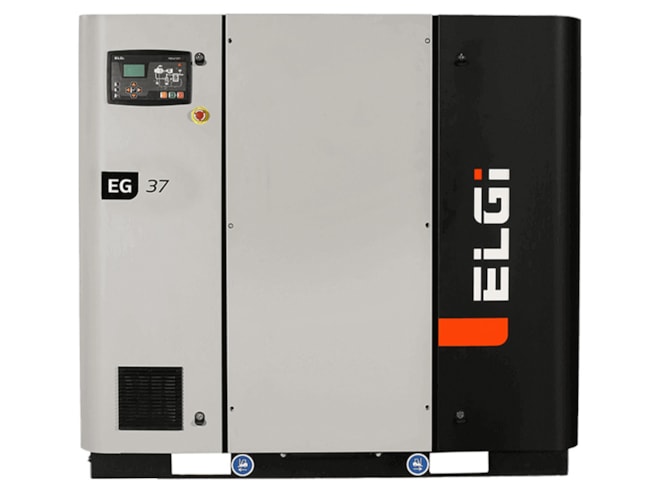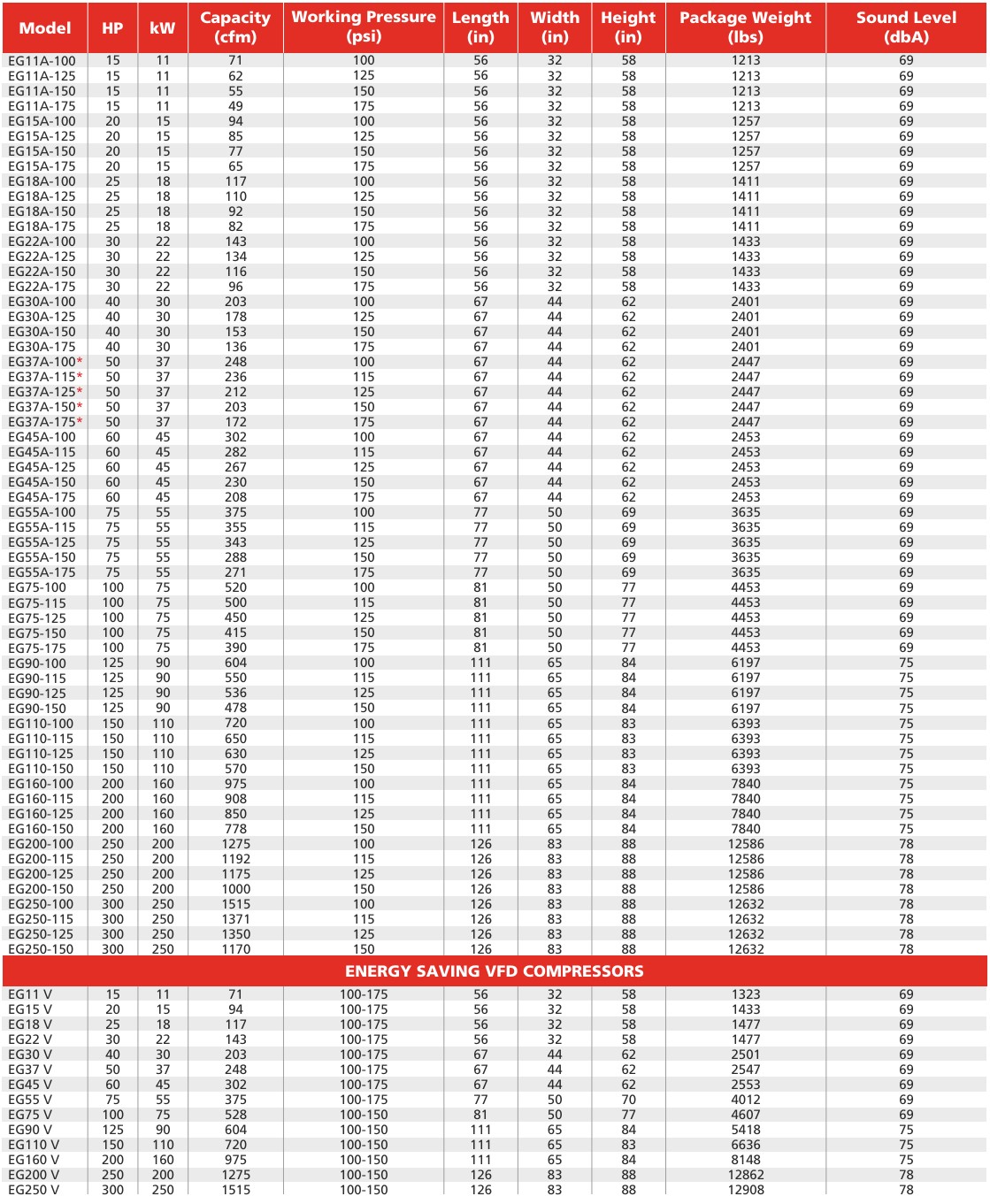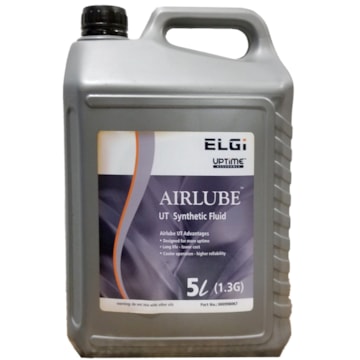ELGi EG Series Rotary Screw Air Compressor
15 to 300 hp configurations available, fixed or variable speed drive, includes start up at jobsite by ELGi trained factory technician.

Overview
Features
- 15 to 300 HP options
- TEFC NEMA premium efficiency motor with class F insulation
- Fixed or variable speed models available
- 1 ppm oil carryover
- Wye-Delta starter
- Factory installed dust filters
- Voltages available (depending on horsepower/drive selection):
- 230-460/3/60
- 460/3/60
- 200/3/60
Tech Specs

Description
The ELGi EG Series rotary screw air compressor comes equipped with eta-V profile rotors with a 4/5 lobe combination. The EG series air ends are designed to run slower, maximizing the air compressors' life and efficiency while providing high quality compressed air even in harsh environmental conditions.
The EG Series features unique Oil Separation by Impact and Centrifugal action (OSBIC) process to separate air and oil while minimizing pressure drop. This process involves removing oil in three stages, delivering consistent low oil carryover in the compressed air which reduces the oil discharged into the environment.
The EG series have optional Variable Frequency Drives (VFD), which help match the compressor output with the demand by varying the motor speed. This means reduced power consumption following the reduced demand, eliminating the frequent load-unload cycle and offering an energy-efficient solution.
Documents
Accessories
Maintenance Kits
Lubricants
Warranties

Need Help? Call an expert at 1-866-778-6572
We're open Mon - Fri / 8:00 AM - 5:00 PM EST


























